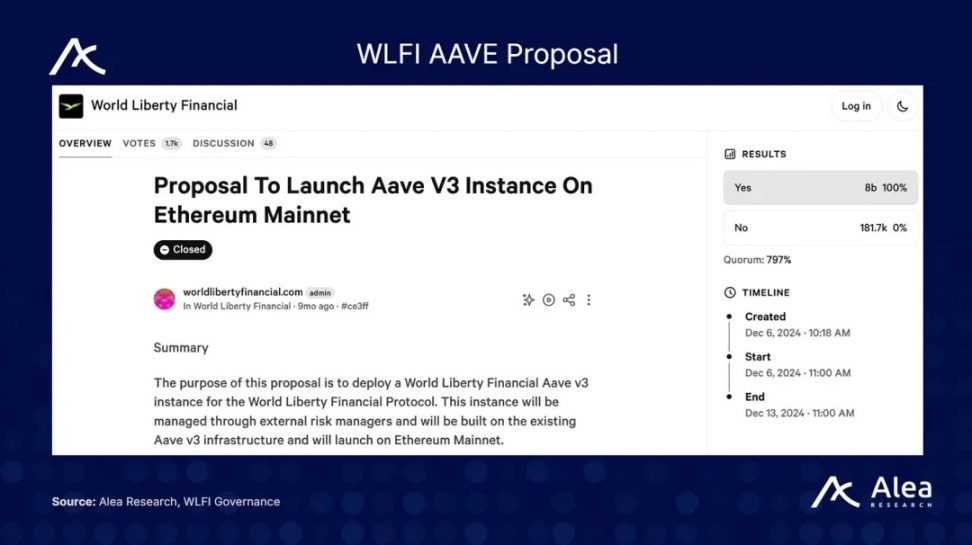WLFI, a crypto project heavily backed by the Trump family, is becoming a market focus as its launch date approaches. It's no longer a simple DeFi platform, but rather a "next-generation financial infrastructure" that integrates stablecoins with capital markets. Its pre-market price on major platforms has reached $0.319, representing a return of over 20 times compared to the initial investment of $0.015 for early investors. Behind this myth of immense wealth lies significant uncertainty. Will this highly anticipated Trump family project, like the Trump meme, continue its meteoric rise, or will it reach peak value upon launch? This article provides a detailed understanding of WLFI and the underlying strategy. 01. What is WLFI? WLFI's core positioning is a hybrid between a stablecoin issuer and a decentralized finance (DeFi) service platform. The organization plans to offer payment, lending, and token issuance services through its flagship products: USD1 stablecoin: A digital currency pegged to the US dollar, fully backed by short-term US Treasury bonds, cash, and US dollar deposits, with custodian BitGo Trust Company. WLFI governance token: A utility token used for protocol governance, token emission, and fee capture. WLFI's value proposition lies in combining a regulated, on-chain US dollar with a governance token that directs protocol revenue and influences treasury policy. The platform aims to serve both retail users (offering deposits, payments, and stablecoin transfers via a mobile app) and institutional users seeking on-chain trade finance and real-world asset issuance. 02 USD1 - Secure Institutional-Grade Stablecoin WLFI's flagship product is USD1, a fully collateralized stablecoin backed by cash and U.S. Treasuries. WLFI stated that it partners with BitGo Trust Company to hold reserves, using these reserves to mint and redeem USD1 on demand, enabling direct exchange between the stablecoin and the U.S. dollar. Currently, USD1 has a circulating supply of $2.4 billion, making it the sixth-largest stablecoin. USD1 serves both retail and institutional users. Retail users can hold stable, on-chain assets, while institutional users can leverage USD1 for cross-border settlement, trade financing, and yield-oriented DeFi strategies. WLFI's ultimate goal is to enable settlement of regulated on-chain securities and real-world assets in USD1, creating a unified marketplace for digital and traditional finance. To ensure cross-chain portability, WLFI integrated USD1 via Chainlink's Cross-Chain Interoperability Protocol (CCIP), enabling secure transfers between Ethereum and Binance Smart Chain, with plans to support additional networks. This multi-chain design aims to position USD1 as a cross-ecosystem settlement asset. 03 WLFI Token Sale, Unlock, and Governance WLFI's governance token completed one of the largest token presales to date, selling 25 billion tokens and raising $550 million. The presale attracted over 85,000 participants, reflecting strong demand from both retail and institutional investors. WLFI tokens are scheduled to be available for trading on September 1, 2025. Early adopters will receive a 20% token allocation, with the remainder gradually vesting according to a schedule determined by a community governance vote. This structure is designed to balance early liquidity for participants with long-term interest alignment. Tokens allocated to the team, founders, and advisors will remain locked up at the Token Generation Event (TGE). The partnership with Nasdaq-listed company ALT5 Sigma marks a significant milestone in WLFI's strategy. In its recent S1 filing, ALT5 Sigma announced it was raising $1.5 billion to purchase WLFI tokens, with plans to hold approximately 7.5% of the total token supply. As part of the transaction, they received $750 million worth of WLFI tokens. This arrangement, similar to MSTR's Bitcoin corporate treasury strategy, suggests WLFI aims to peg its token to a publicly traded company. Eric Trump has joined ALT5 Sigma's board of directors, and Zach Witkoff has become chairman, further solidifying the connection between the two companies. 05 Ecosystem Projects To enhance the liquidity and utility of USD1 and WLFI, WLFI is integrating with established DeFi protocols: Aave v3 Deployment: WLFI proposes to launch a USD1 lending pool on Aave v3. This proposal will allocate 20% of protocol fees and 7% of the WLFI token supply to the Aave DAO for governance and liquidity mining. This dedicated instance will support Ethereum (ETH) and Wrapped Bitcoin (WBTC) lending markets, enhancing USD1 liquidity and attracting users. This integration underscores WLFI's focus on connecting to leading DeFi money markets. (However, there is some controversy regarding the validity of this proposal and whether it has been implemented.)

Dolomite: Dolomite is a lending protocol founded by WLFI's CTO. Dolomite was one of the first DeFi protocols to support USD1 integration and lending pools. Blockstreet: Blockstreet is a launchpad and token issuance platform within the WLFI ecosystem, aiming to provide infrastructure for new projects to mint, distribute, and list tokens using USD1 and WLFI as core settlement assets. Blockstreet's roadmap includes cross-chain issuance and compliance tools, but specific details remain vague. 06 Summary: Through its flagship USD1 stablecoin and governance token, WLFI is committed to bridging traditional capital markets with decentralized finance (DeFi), building the next generation of financial infrastructure. Ecosystem projects such as Dolomite and Blockstreet provide liquidity and utility for USD1 and WLFI. Despite the controversy surrounding its Aave v3 integration proposal, WLFI demonstrates the potential to build a unified financial market through its multi-chain design and governance mechanism.
With the grand vision of "next-generation financial infrastructure", how big a market capitalization can WLFI support?
 Kikyo
Kikyo







